
 Christian Hazel
Brand Manager, Four Wheeler
Christian Hazel
Brand Manager, Four Wheeler
This isn't the first time we've brought you this Locker Lowdown story. But like chocolate ice cream, cold beer in the summertime, and Catherine Bach in a pair of Daisy Dukes, some things just bear repeating. This is Jp's all-encompassing collection of traction aiding reviews. We're speaking factually here, not just barfing back some catchy phrases from a manufacturer's marketing brochure. And while you may not find absolutely every traction aiding device ever manufactured listed here, you will get the true skinny from a team of Jeep huckers who normally test stuff to the limits. We've wheeled 'em, commuted with 'em, and sometimes broken 'em. So read on for the truth.
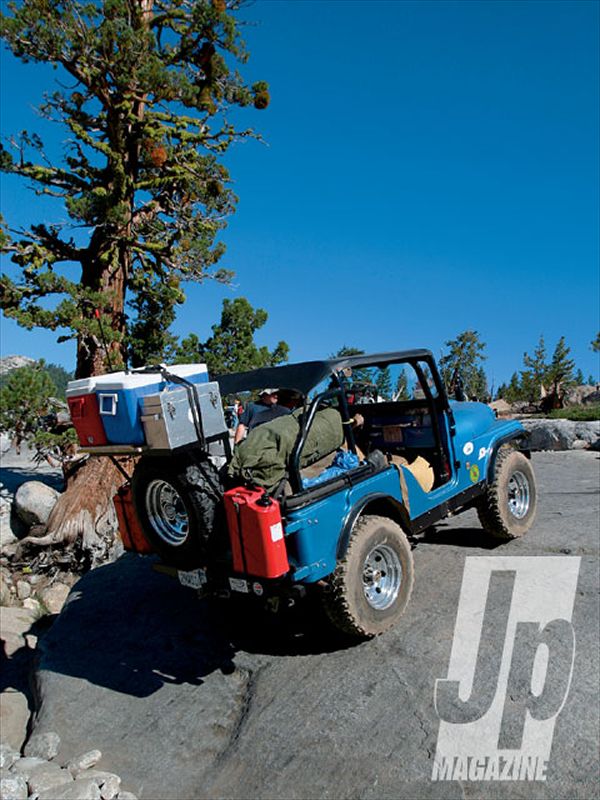
ARB Air Locker
Overview: An ARB Air Locker operates as a normal open differential when not engaged. When engaged, a collar is pneumatically moved to lock the spider gears, creating a spool. When locked, both axleshafts turn at the same rate, whether in a front or rear application.
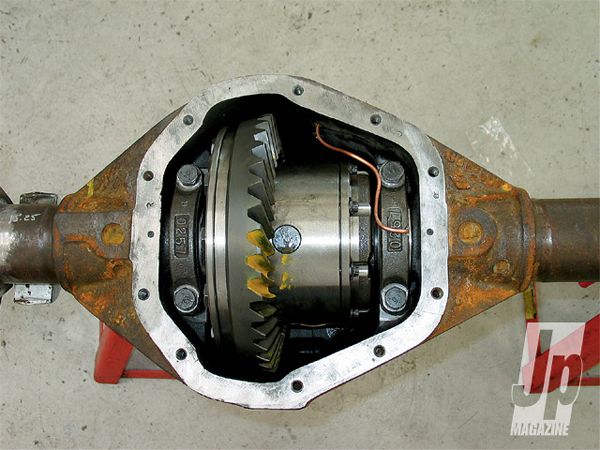
Street:
If you like the way your open diff behaves on the street, then an ARB is for you; it goes unnoticed. Or you can lock it up and chirp tires when parking to impress the ladies.
Off-road:
As long as you feed it the required air pressure, the ARB locks and unlocks crisply and predictably off-road. We haven't had any need to jockey the vehicle around to get gears and pins to line up. It's on when the button is on and off when the button is off. When engaged, both wheels spin at the same rate, but offer the flexibility of being turned off for super-tight turning. Makes a great front differential for twisty trails.
Good: Highly versatile, delivering excellent balance between on- and off-road requirements. Differential is very strong and can take the shock of an axleshaft snapping under load without failing.
Bad: One of the most expensive lockers out there per application. The air lines can be vulnerable to obstacles. Requires a source of onboard air. Lots of things that can go wrong if not installed properly. We've suffered a few internal seal leaks either from high mileage or contaminated oil. The result is gear oil traveling up the air line and out the solenoid purge orifice. On two of our units, air leaks from the seals kept the unit from locking.
Rubicon TJ TFS Air Locker
Overview: The good news is that if you bought an '03-'06 Wrangler Rubicon, you got a pair of these for free. The Rubicon's pneumatically-operated TFS lockers featured an open/spool configuration in the front and a gear-driven limited slip/spool configuration in the rear.
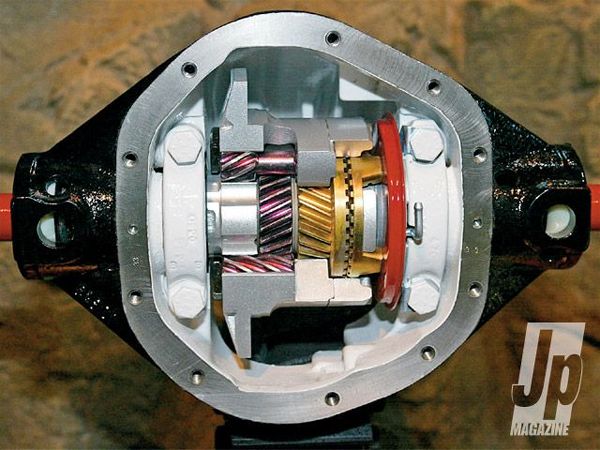
Street:
See Truetrac listing for more information.
Off-road:
The units are unintrusive when unlocked and offer spool-like traction when locked. Aside from very few compressor or air line troubles caused by trail debris, the lockers themselves are extremely durable and most of the time are quick to lock or unlock. Off-road, they've proven themselves for use with tires up to and over 37-inches in diameter with no ill effects.
Good: Long-lived durability, and exceptional off-road performance.
Bad: They're not exactly cheap or very easy to come by unless you're starting with a Rubicon or a set of replacement axle housings. Also, the lockers require a very low-pressure (3-5psi) source of air or you can blow out internal components.
Auburn Limited Slip
Overview: The Auburn Limited Slip uses cone and friction materials to create enough friction to hold the axleshafts together. When enough torque bias is realized between the two shafts, the clutches give and allow differentiation of the shafts. In layman's terms, it grabs until it can't grab anymore, then it turns.
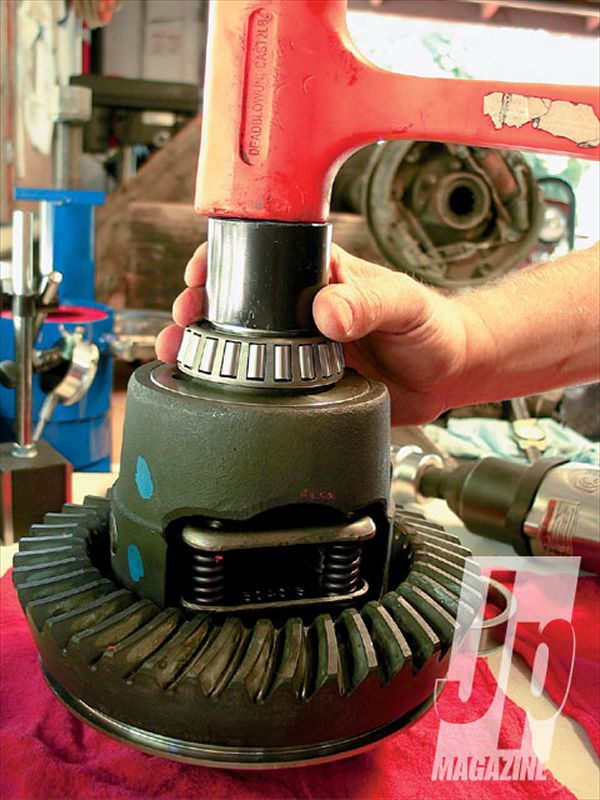
Street:
You'll hardly know you've got an Auburn in the rear of your vehicle unless you make enough power to spin the rear tires-then, just look for the two black patches on the pavement. We never experienced chirping or handling quirks when driving it.
Good: The Auburn's excellent street manners and decent traction off-road make it a good choice for daily drivers and mild wheeling vehicles.ter text here.
Bad: Requires gear oil with a friction modifier and some installations require slight modifications to the housing. If you're running 33s or bigger and hit some harder terrain, your off-road performance probably won't be that satisfactory. The unit has wearable parts inside and cannot be rebuilt at home. It must be sent back to the factory for refurbishment, which may be required after 100K miles of normal enthusiast usage.xt here.
Detroit Locker
Overview: The Detroit Locker is an automatic locker that uses heavy springs and geared teeth to allow the outside wheel to spin faster when turning. In most applications the Detroit Locker is a replacement case, but for some axles-such as for the GM 14-bolt, Dana 70, and Rockwell-it drops into the stock carrier. We like them for front applications best, but have used them in the rear of longer-wheelbase vehicles with much success.
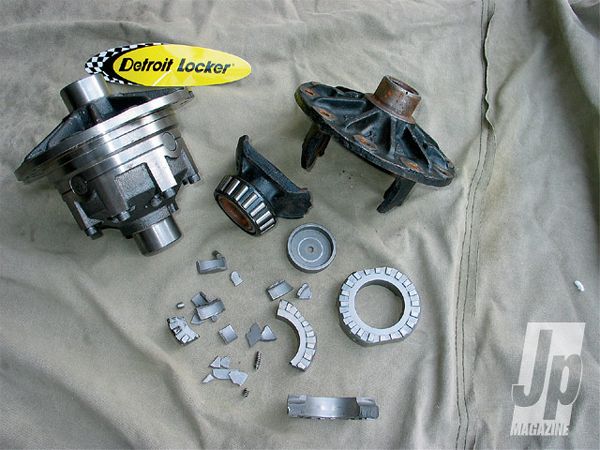
Street:
Keep in mind we've tested Detroits in short- and long-wheelbase vehicles. In a longer vehicle, the handling drawbacks aren't as bad, but the short stuff (like Wranglers) earns this locker a bad on-road score. Whether you're turning or going straight, or if you're on the gas, a Detroit Locker behaves just like a spool. When you let off the gas, the Detroit will unlock. This is especially noticeable in a rear application of a high-horsepower, manual-transmission, short-wheelbase vehicle-such as a V-8 Jeep-and the resulting loading and unloading can cause a violent jerking that you need to get used to. We've driven rigs with super-supple suspensions or no sway bar that have changed lanes from the action.
Off-road:
A Detroit Locker is a really strong differential, and about the only way we've seen them break is when they're violently loaded and unloaded-like when an axleshaft breaks. This vulnerability is the only reason the Detroit loses one point in the judgment. While you can lose some ability to turn when using it in a front application, we've had little trouble snaking through tight spots by modulating the gas pedal to allow the front differential to unlock periodically for tighter turning. We like the no-brain traction with no buttons to push or levers to pull.
Good: Tough as nails, no brain required to operate, insane traction when on the gas, and OK for front and rear applications.
Bad: On-road handling quirks, susceptible to damage from a broken axleshaft, and can be a little rough on the street in the rear of short Jeeps.
Ox Locker
Overview: An OX locker is a cable-operated locker. When disengaged, it's an open differential. When it's locked, it's a spool. The cases are burly, and the diff covers are heavy steel built to withstand rock hits and prevent deflection of the shift mechanism.
Street:
Since it's an open diff when unlocked, it's unnoticeable on the street. Make sure the cable is adjusted properly, or you may sense some ratcheting as the locking toothed gear attempts to drop into place.
Off-road:
Works well as a front or rear diff to help keep axle parts alive and allow you to turn more sharply. Older non-spring-loaded shifters can be difficult to engage in tight situations, but most of those have been swapped out and are off the market by now. The new version of the shifter is much better and easier to use.
Good: It's extremely strong and is an open diff when you want it, or a spool when you want it. Great for a daily driver or hard-core abused Jeep. Perfect for front and rear applications. Comes with a bomb-proof differential cover, and the beefy locking spool design will survive a catastrophic shaft or U-joint failure.
Bad: The cable must be adjusted properly or the unit will not function correctly, so make sure it's installed by somebody whose primary diet isn't bananas and peanuts from the zoo. Early shifter can be difficult to engage. The heavy industrial cable coming out of the cover can be vulnerable to trail debris in some applications. Also, the heavy cable needs to be routed into the cab, and the shifter is somewhat inconvenient to try to locate cleanly in a Wrangler or other vehicle with a small interior.
Detroit Truetrac
Overview: The Truetrac is a gear-driven limited slip that requires no special friction modifiers to operate. That means that the bozo at the Qwikee Lube can't destroy your spendy limited slip by putting the wrong oil in. Under power, torque is sent to both tires unless there's an excessive amount of resistance on one.
Street:
The Truetrac is very unobtrusive on the street. When gassed in a corner or turn, you may feel the slightest pull, but there's no jerking or violent engagement of any sort. When under heavy throttle in a turn, the inside tire will bark a little, but not under normal driving conditions. Turning radius and tight maneuvers are totally unaffected.
Off-road:
The Truetrac offers near locker-like traction in all but the gnarliest terrain. We've found that modulating the brakes a bit can help keep one tire from spinning when the suspension is crossed up. You can't drive as elegantly in the rocks as you can with a spool or locker, but you'll have to work pretty hard to get stuck. In loose dirt twisties where you're lifting a tire, a Truetrac will almost always get you through.
Good: Great traction on- and off-road and can use straight 90W gear oil. They're moderately priced and great for front and rear applications.
Bad: There are a lot of little parts inside, so it's not as strong as most full-case lockers. Also, it doesn't offer as much traction as a locker or spool, and you may slightly notice it operating during some street driving.
Power-Lok
Overview: The Power-Lok is a clutch-driven limited slip unit and is considered a stronger, heavy-duty version of the Trac-Lok. Power-Loks are commonly found as the optional limited slip in older Jeeps. New units are produced by Precision Gear.
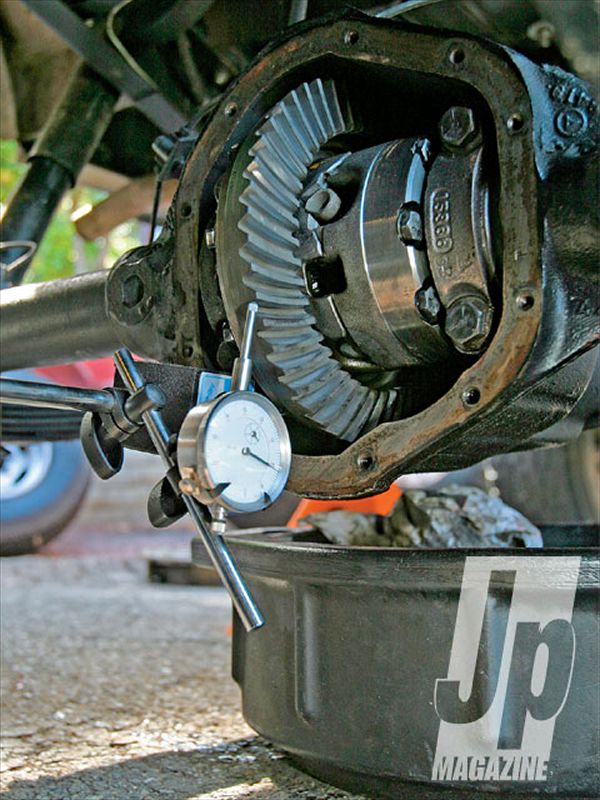
Street:
When worn out, you'll think it's an open diff. But even new, it's hardly noticeable on the street.
Off-road:
Again, when the Power-Lok is worn out, you'll think it's an open diff. Modulating the brake pedal helps make the Power-Lok come alive and provide impressive slightly-better-than-open-carrier traction. We give them a solid "eh."
Good: Came factory in some M38A1s and other early Jeeps, so you may already have one. They're stronger than most other limited slip cases, and can be used in front and rear axles without adverse effects.
Bad: They require gear oil with a friction modifier and have wearable clutches, which can be replaced at home. Not for the extreme and not a replacement for a full locker.
Wrangler JK TFS Electric Locker
Overview: When Jeep upgraded the Wrangler line to the '07-up JK platform, the old pneumatically-actuated lockers of the TJ Rubicons got the heave-ho in favor of the new electronically-actuated selectable lockers. Although they only fit Rubicon Dana 44 housings, the TFS Dana 44 Rubicon lockers markedly simplify the installation of Rubicon axles in a non-stock application, requiring only a switched source of 12V power to actuate.
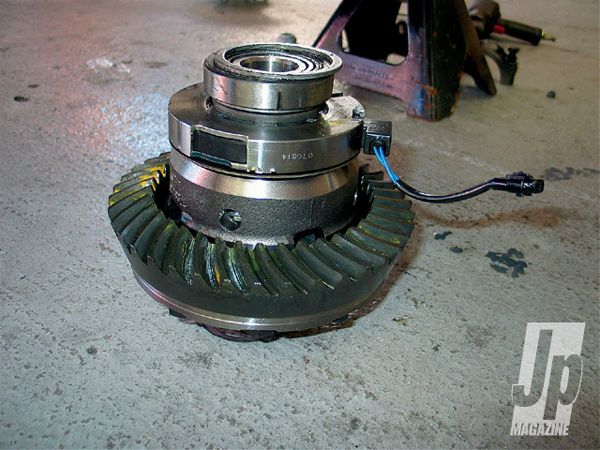
Street:
Hey, when it's off it's an open diff. No drawbacks here.
Off-road: To be somewhat picky, we've found the JK Rubicon axles sometimes need to be locked 20-30 feet before you need them, rather than when you're already stuck. When locked, they effectively function as a spool, offering uncompromising traction in any and all terrain. That is, as long as your tires are up to the task.
Good: It's got millions of dollars in factory-funded research and development behind it. They just work.
Bad: They only work in JK Rubicon Dana 44 axle assemblies, so you can't just plunk one in your '76 Wagoneer front axle.
Trac-Lok
Overview: The Trac-Lok is the OEM limited slip differential offered in many vehicles-from early CJs from the mid-'70s up through XJs and some TJs. It uses stacks of friction discs that hold the spider gears from differentiating until enough torque is generated by the shafts to let them spin.
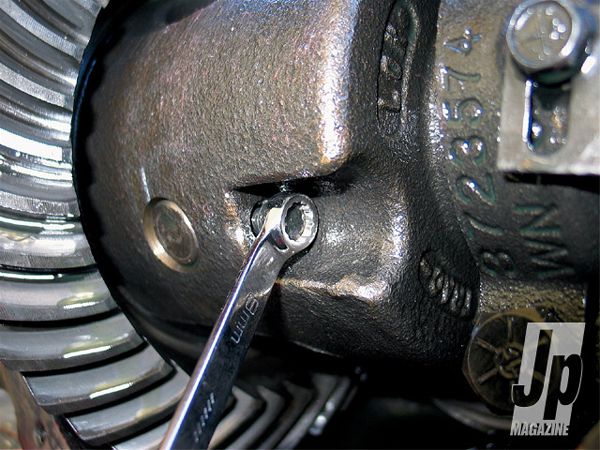
Street:
You'll think you're driving an open diff. The Trac-Lok is largely unnoticeable.
Off-road:
You'll think you're driving an open diff. The Trac-Lok is largely unnoticeable. Unless it's new from the factory, don't expect anything but poor performance off-road from a Trac-Lok.
Good: It probably came in your Jeep from the factory. The unit can be rebuilt at home.
Bad: They require gear oil with a friction modifier and have wearable clutches inside. If you're planning on adding a lunchbox locker, you'll need to order a special application that will work with the clutch disc recess in the case. The recess inside of the case makes it slightly weaker than a standard open diff case. It's difficult to weld into a spool if that's your thing. Basically, they don't work well, so don't waste your money. You're better off with an open diff.
Spool
Overview: A spool is just a solid chunk of metal that connects your axleshafts together permanently and forever. A mini-spool drops inside your factory carrier and replaces the spider gears. A full spool replaces your existing carrier and is what you should run, if possible. Don't run a spool in the front, 'cause you ain't a gonna be able to turn; they're for rear applications only.
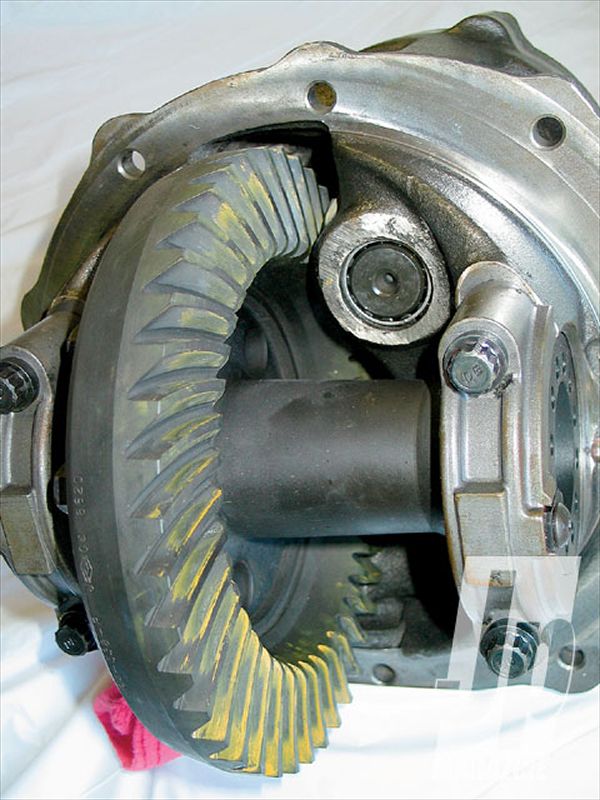
Street:
A spool is noticeable on the street when cornering sharply, but is very predictable, and we actually prefer one in the rear of a short-wheelbase vehicle over an automatic locker. Since there's never any loading or unloading, you don't get the jerking or banging associated with automatic lockers. It will increase your turning radius somewhat, and you'll notice your rear tires will scrub and chirp around corners.
Off-road:
Since a spool never unlocks, it's extremely predictable off-road. And since it's a solid chunk of metal, we've never been able to harm one. We haven't really found the loss of turning radius to be a hindrance. That's what Reverse is for. We hypothesize that a spool is actually easier on axleshafts off-road because there's never any sudden loading or unloading. Power is always evenly distributed to both shafts, and traction is generally phenomenal.
Good: Inexpensive, simple, lightweight, and strong.
Bad: Tires will chirp when turning on pavement, tire wear is increased, and the turning radius increased. Really only for a rear-axle application that's primarily used off-road.
Welded Diff
Overview: In a normal open differential, a set of spider gears allows the axleshafts to spin at different rates for smooth turning. Welding these gears together and then to the differential case sides creates a poor-man's spool.
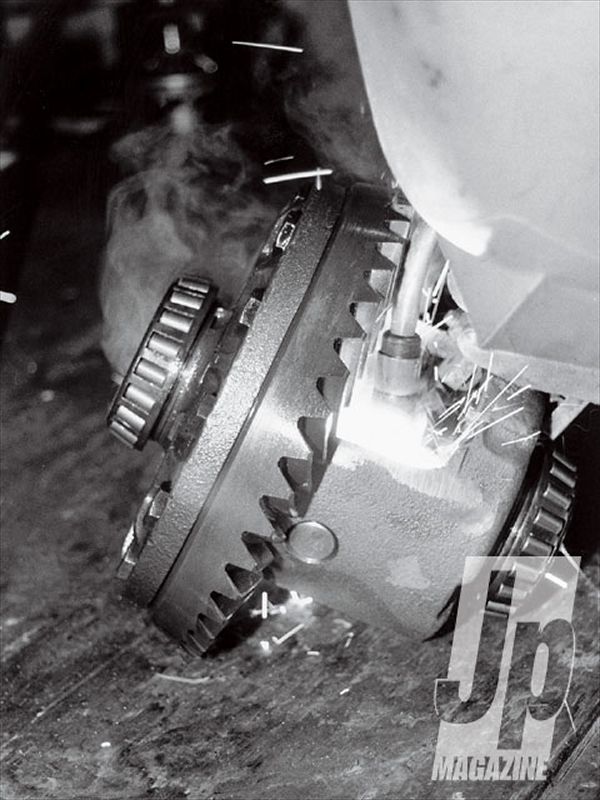
Street:
Overall, the welded diff will behave just like a spool. In some instances where the axleshafts are of a smaller diameter (1.30-inch and smaller), there may be some torsional loading and unloading of the axleshafts when used with sticky tires. This will make for more tire squeal and chirping when turning. Basically, the welded diff loses a point to the spool because of the potential for the welds to break, not due to any difference in performance.
Good: Dirt cheap and gives great traction.
Bad: It's pretty butch, and the finished product will only be as good as your welds and the strength of the stock case. It's really only good for some rear-axle applications that are used primarily off-road.
Gov-Loc
Overview: Manufactured for General Motors by Eaton, the Gov-Loc is really a marvel of engineering. It functions as an open diff when unlocked. When the difference in wheelspeed from one side to the other reaches a certain point, centrifugal weights expand and cause the differential to go from an open to locked diff in milliseconds.
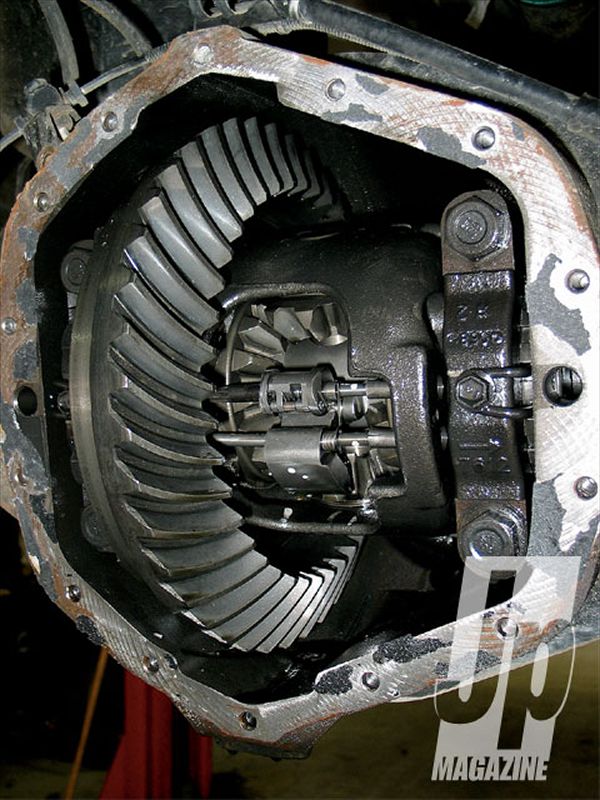
Street:
It's fine when it's functioning as an open diff, but wheelspin is actually required to get a Gov-Loc to engage. Usually, once there is enough wheelspin present, the vehicle bangs and jerks when the locker engages. It just feels violent-and we're sure it is.
Off-road:
Like the street, the Gov-Loc requires a fair bit of wheelspeed before it will engage. You really feel like you're about to blast off, then BANG, away you go. The violence with which a Gov-Loc engages is one reason we see so many of them being replaced at our local 4x4 shop. Once you add larger tires or hit some hard off-road trails, the Gov-Loc usually blows its fine, Swiss-watch-like internals to dust.
Good: Available in many factory GM 10-, 12-, and 14-bolt rear axles.
Bad: They're not durable and you'll almost certainly be replacing it with one of the other aftermarket differentials listed in this story.
Lunchbox Lockers
There are tons of drop-in lockers designed to replace your factory differential gears. We've used several with generally poor results. While we consider lunchbox lockers a good beginner or temporary locker, we wouldn't count on one as a permanent modification. Many of the companies that make lunchbox lockers also make full-case lockers, so if you've got the money, step up to the plate. Their operation and installation are similar enough that we'll lump their performance into one general category, then give more detailed descriptions below.
Overview:
Is a replacement for spider gears that fits inside stock differential carrier. Geared teeth and springs unload when coasting and lock under power.
Street:
Acts like normal automatic locker, so normal jerks and banging associated with automatic lockers apply.
Off-road:
Locker-like traction when working properly, but gear teeth are susceptible to wear and failure. When worn, it may not lock or unlock smoothly. When the unit fails to lock, it will leave you with no drive in that axle. Very susceptible to damage from axleshaft failure, and strength of stock carrier can be a factor.
Good: Inexpensive, easy installation, no gear setup required. Can be used in front and rear applications.
Bad: Generally is weaker than full-case counterparts, wears quicker, strength limited to stock carrier.
Notes:
Richmond Gear Lock-Right: Easy installation. Doesn't work well with short wheelbases or manual trannies. With hard use, the teeth will wear and round off on edges for weird engagement/disengagement. Pins that hold locker halves together can shear under extreme shock load. Good factory warranty service.